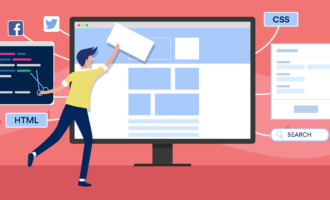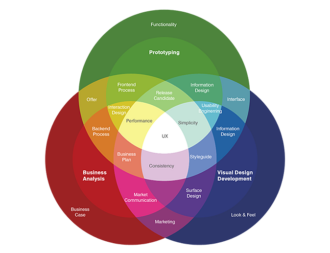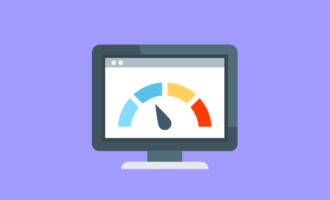First impressions are key. Experts say we size up a new acquaintance in 30 seconds to two minutes.
Websites, which have become a critical customer entry point for businesses and nonprofits of every size, have even less time to make a first impression — under a second, in fact. As many as 38 percent of visitors leave if they find the content or layout of a website unattractive.
It’s pretty clear that the most effective websites are both visually appealing and easy to use.
These two characteristics form the bedrock of web design, which is concerned with the planning and creation of every aspect of a website. And the professionals responsible for bringing this area of expertise to life are known as web designers.
Just as the significance of websites has increased, the role of web designers has become more essential — and more intricate. These days, there are two primary types of web designers: UX (user experience) and UI (user interface) designers.
But what differentiates a web designer from a UX designer, and how do they compare? How do we define UX vs UI web design, and how do the skills needed for each role fit into web design as a whole and the job market?
What is a web designer?
A web designer works on the front end of a website — the part a person can see and interact with. This includes both the aesthetic elements of the site, like photos, graphics, color, and typography, as well as the experiential elements, like the layout of information on a page. The front end also includes how one web page flows to another.
A web designer is different from a web developer. A web developer uses technology and computer languages (e.g., HTML, CSS, JavaScript) to bring a web designer’s work to life. They’re also responsible for other technical aspects that may affect a website, like setting up and maintaining databases and servers. In the U.S., web developers are often referred to as engineers.
In the past, web designers often began their careers as graphic designers and evolved, along with the expanding digital world, into web designers. “Web designer” has become an umbrella term that includes areas of specialization within web design, like UX design and UI design.
Large companies, like Apple, Twitter, and Facebook, post job advertisements specifically for web designers with an area of specialization. In a smaller company or early stage startup, though, it’s rare to be hired solely as a UX designer or UI designer. In these kinds of organizations, you might be hired as a general web designer and be expected to wear both UX and UI design hats.
Web designer roles and responsibilities
- Bring creative concepts to life through digital experiences (website design, UX, app design)
- Lead and support design initiatives and work collaboratively to help facilitate design
- Collaborate creatively and transform marketing objectives into visual solutions
- Manage and work with clients
- Visually break down complex technical concepts into easy-to-understand graphics, illustrations, and layouts
Web designer education and skills
- Associate’s degree (bachelor’s degree preferred), in web design, computer science, business, graphic design, visual arts
- Proficiency with the Adobe Creative Suite, including Photoshop, Illustrator, InDesign, Acrobat Pro, Fireworks, and Dreamweaver, as well as with CSS/HTML and Microsoft Office
- Strong knowledge of UI design
- Strong web design, layout, and UX skills
- Strong communication skills
The income range for website designers is affected by education, experience, and geography. The median income is $64,784.
What is a UX designer?
The terms UX and UI design have been around since the 1990s, originally cited in The Design of Everyday Things by Don Norman. UX and UI approaches are applied in all areas of design — like coffee cups, chairs, and flowerpots — but now these terms are mostly used by the tech world in relation to websites and apps.
The UX web designer role is about creating a website that’s effective and easy to use.
UX web designers investigate and understand what users want and need — and then create a website experience that delivers these elements seamlessly and efficiently. This includes planning the steps a website visitor may take to achieve a certain task (like making a purchase or donation), organizing information across the website, and building prototypes that UI designers can use to enliven the experience with aesthetic flourishes.
UX designer roles and responsibilities
- Brainstorm, sketch, prototype, and collaborate with research and product teams to design solutions for identified problem areas
- Design prototypes for web and mobile apps
- Collaborate with front-end developers on solutions to usability challenges
- Translate business and user requirements into meaningful interactive experiences
- Develop detailed schematics, sitemaps, and wireframes for highly interactive interfaces across multiple platforms
- Participate in immersive user research, concept testing, and usability testing
- Continually refine the design according to user feedback
UX designer education and skills
- Associate’s degree or bachelor’s degree in a relevant field, including computer science, visual design, web programming, information architecture, communications, psychology, and anthropology
- Knowledge of web and mobile apps and design patterns
- Knowledge of applicable software — e.g., Figma, Sketch, and Adobe XD
- Experience with HTML and CSS, and some exposure to JavaScript
- Good communication and collaboration skills
- Strong cognitive, analytical, and problem solving skills
- Ability to prototype and wireframe sites or apps
- Pitching and presentation skills
The average salary for a UX designer is $97,938.
What is a UI designer?
A UI web designer is responsible for taking the skeleton structure the UX designer creates and fleshing it out with visual elements like color, typography, graphics, and other interactive features.
More specifically, they may choose the shape of a button, the amount of space between different parts of a web page, how heavy the font for a heading is, etc. In a nutshell, they’re tasked with making every single design detail as attractive and aesthetically appealing as possible — while still keeping everything balanced, unified, and on brand.
UI designer roles and responsibilities
- Take the needs and structure of a product or app from UX and design an aesthetically attractive platform
- Design engaging UI interfaces for websites of varying scale and complexity
- Provide informed recommendations for marketing strategy, design and layout, and behavior and functionality of websites through general knowledge of UI/UX best practices
- Build simple prototypes for user testing of interface elements and concepts
- Create visual and brand consistency throughout a company’s digital sphere
- Stay up to date with the competition and market trends
UI designer education and skills
- Associate’s or bachelor’s degree in graphic design, web design, or a related field
- Knowledge of the Adobe Suite, specifically XD, Photoshop, Illustrator, and InDesign; or Sketch and Microsoft Office
- Experience designing e-commerce sites
- Strong understanding of best practices in responsive layout
- Critical design taste, specifically in layout, typography, and photography
- Awareness of current trends in web and user interface design
- Strong visual and problem solving skills, with an eye for aesthetics
The average salary for a UI designer is $83,339.
In summary, what is UX vs UI web design?
UI and UX are related but different. UX web design is more analytical, and UI web design is more concerned with visual appearance.
To put it simply, if we look at the overall design of a classic vintage automobile — say the Milan-crafted 1962 Aston Martin DB4 GT Zagato — you can identify the general design work of the UX and UI designers.
UX designers would be focused on the transmission, horsepower, torque, speed, axles, engine, steering column, and the control dials’ functions.
UI designers would turn their attention to the beautiful sapphire blue paint color, the streamlined yet curvy shape, the light maple steering wheel that contrasts with the richness of the body color, the control dials’ appearance, and the emotion you feel when you put your foot on the accelerator.
Web design — and both of its areas of specialization — is a field that’s growing in demand. Knowing about these design categories can help you position yourself in this rewarding career vertical.
















































































Send Comment:
1 Comments:
More than a year ago
Good article, I like the car example, so the differences are very obvious. The Gapse blog, which describes the differences between UI and UX, says: UX is the recipe for your cake, and UI is its decoration. Also a great example for this topic. But the main differences between UI and UX can be formulated in several paragraphs (from the article
1) UX makes the interfaces functional and makes the product valuable, and the interface makes the interfaces beautiful and easy to use.
2) user interface design should be completed after the UX process
3) UX is used in all products, interfaces and services, and the interface is intended only for working with interfaces.